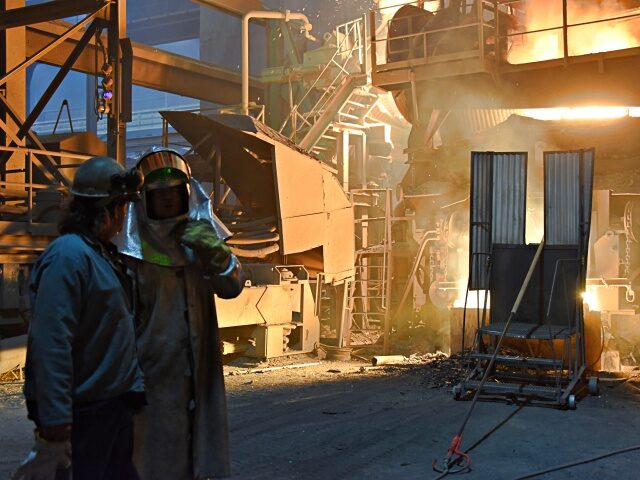The second largest aluminum mill in the United States has idled operations, laying off about 600 American workers, due to “untenable” electricity and energy prices.
In June, Century Aluminum Co. executives announced that they would idle the Hawesville, Kentucky aluminum mill for about 9 to 12 months as a result of skyrocketing prices to merely keep the plant’s lights on.
Similarly, executives with two steel mills are suspending operations because they cannot afford the costs of energy to keep the plants open. This comes after executives warned federal regulators about debilitating energy prices months ago.
Bloomberg reported:
On June 22, 600 workers at the second-largest aluminum mill in America, accounting for 20% of US supply, learned they were losing their jobs because the plant can’t afford an electricity tab that’s tripled in a matter of months. Century Aluminum Co. says it’ll idle the Hawesville, Kentucky, mill for as long as a year, taking out the biggest of its three US sites. A shutdown like this can take a month as workers carefully swirl the molten metal into storage so it doesn’t solidify in pipes and vessels and turn the entire facility into a useless brick. Restarting takes another six to nine months. For this reason, owners don’t halt operations unless they’ve exhausted all other options. [Emphasis added]
…
At least two steel mills have begun suspending some operations to cut energy costs, according to one industry executive, who asked not to be identified because the information isn’t public. In May, a group of factories across the US Midwest warned federal energy regulators that some were on the verge of closing for the summer or longer because of what they described as “unjust and unreasonable” electricity costs. They asked to be wholly absolved of some power fees—a request that, if granted, would be unprecedented. [Emphasis added]
During an earnings call this week, Century Aluminum Co. CEO Jesse Gary said the temporary closure of Hawesville — which resulted in the layoffs of about 600 American workers — was a result of “untenable” energy prices.
“Elevated energy prices also resulted in an unfortunate decision to curtail our Hawesville operations,” Gary said:
While this decision was difficult, it was necessary given relatively high energy consumption of the Hawesville smelting technology and lack of value-added casthouses, which made the financial economics of continuing to run the smelter untenable at these energy prices. The curtailment was conducted in a manner that will allow for the restart of the smelter, if and when market conditions return to more normal accommodating levels. [Emphasis added]
Similarly, the Alcoa Corporation announced in July “that it will begin the process to immediately curtail one of three operating smelting lines” at its Warrick, Indiana, plant.
This comes after Alcoa shuttered the Warrick Operations smelter in 2016 under the Obama administration as a result of cheap, subsidized Chinese aluminum flooding into the U.S. market. Those operations later reopened in 2017 under the Trump administration.
The energy industry is also headed for major layoffs and plant closures.
At least six coal-fired plants in Wisconsin, Indiana, Nebraska, and New Mexico are expected to shut down operations by 2026. Some are planning to close as early as 2024, leaving thousands of Americans laid off and out of work.
Radical environmentalists at the Sierra Group have long celebrated the closure of coal-fired plants and Americans losing their jobs. According to the organization, almost 360 coal-fired plants have shuttered or are in the process of shuttering in the last few years, while just about 170 remain operating.
John Binder is a reporter for Breitbart News. Email him at jbinder@breitbart.com. Follow him on Twitter here.

COMMENTS
Please let us know if you're having issues with commenting.